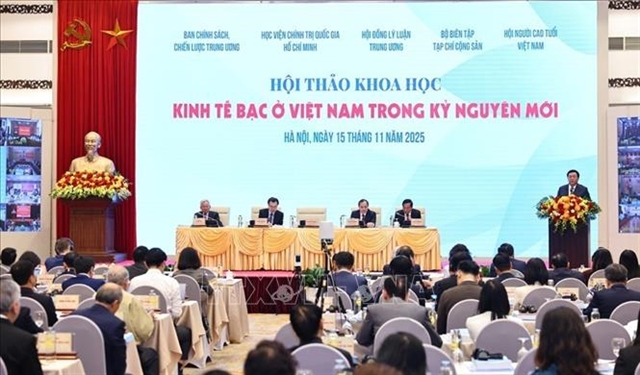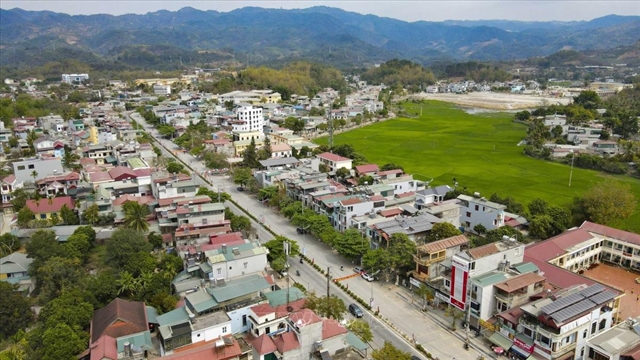 Economy
Economy


|
| Delegates attend the seminar on “ASEAN+3 Regional Economic Outlook and Fiscal Policy 2025” in Hà Nội on April 28. — Photo courtesy of the FTU |
HÀ NỘI — The Foreign Trade University (FTU), in collaboration with the ASEAN+3 Macroeconomic Research Office (AMRO), hosted a seminar on 'ASEAN+3 Regional Economic Outlook and Fiscal Policy 2025' in Hà Nội on April 28.
The event marked the first official launch of the ASEAN+3 Regional Economic Outlook 2025 Report within the ASEAN region.
The conference welcomed representatives from the ASEAN+3 Financial Think-tank Network (AFTN), policymakers, academics, businesses, faculty members and students.
Speaking at the event, Associate Professor Dr Đào Ngọc Tiến said that despite global turbulence, the ASEAN+3 region continues to maintain stable growth. Nevertheless, he stressed the need for appropriate solutions to safeguard this momentum, urging countries within the bloc to strengthen cooperation to tackle emerging challenges together.
During the conference, AMRO speakers presented key findings from AMRO’s ASEAN+3 Regional Economic Outlook (AREO) 2025 and ASEAN+3 Fiscal Policy Report (AFPR) 2025.
According to the reports, the unprecedented escalation of tariffs is creating significant barriers for ASEAN+3 economies. However, the region’s solid fundamentals, resilient domestic demand, diversified trade relationships and available policy space have allowed it to weather these headwinds. Even so, enhanced regional cooperation remains crucial.
Facing mounting uncertainties, financial authorities must stay flexible and responsive to new shocks, while maintaining medium-term commitments and restoring fiscal buffers to bolster macroeconomic stability. Comprehensive structural policies, extending beyond short-term fiscal measures, are essential to drive sustainable and inclusive growth without putting excessive strain on public finances.
Associate Professor Dr Vũ Hoàng Nam highlighted key drivers of Việt Nam’s sustainable medium and long-term growth. Amid global megatrends such as population ageing, climate change, and geoeconomic fragmentation, Việt Nam must pivot toward a productivity-led growth model. Rapid productivity gains (Total Factor Productivity, TFP) fuelled by science, technology, and innovation, along with digital economy development, will be critical for sustaining rapid growth.
Macroeconomic stability, strategic breakthroughs in infrastructure (especially digital infrastructure), innovation-driven human capital, institutional reforms, leveraging new resources like data (with an emphasis on domestic strengths), boosting productivity through technology and innovation adoption, shifting towards a digital economy, enhancing intra-sector productivity, moving into higher-productivity sectors and intensifying regional cooperation to mitigate the negative impacts of geoeconomic fragmentation on technology transfer - these are the pillars for Việt Nam’s sustainable growth over the medium and long term, the conference heard.
The AREO provides a comprehensive assessment of key macroeconomic developments across the ASEAN+3 region, identifies emerging risks to the outlook and offers policy advice to ASEAN+3 member authorities. The AFPR provides a comprehensive assessment of recent fiscal developments and the fiscal outlook for ASEAN+3 economies. — VNS




